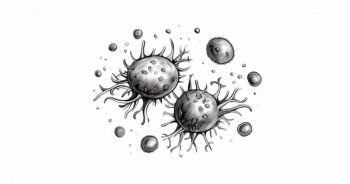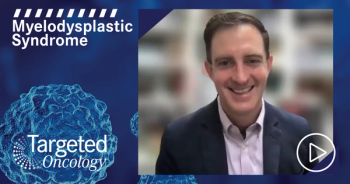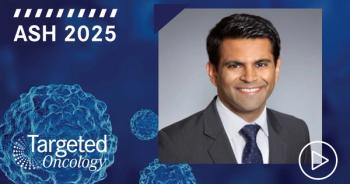
Peers & Perspectives in Oncology
- September I 2025
Tagraxofusp Yields Deep Responses as Frontline BPDCN Therapy
During a live event, Gary J. Schiller, MD, explored the outcomes of the phase 1/2 trial of tagraxofusp-erzs in patients with blastic plasmacytoid dendritic cell neoplasm.
In the past, blastic plasmacytoid dendritic cell neoplasm (BPDCN) was treated with limited success using leukemia or lymphoma regimens, but now targeted anti-CD123 therapy has been developed to address this rare disease in particular. In a recent
Targeted OncologyTM: How was tagraxofusp investigated in patients with BPDCN?
Gary J. Schiller, MD: This was a registration trial [NCT02113982] looking at the CD123 expressing–orphan disease. The original phase 1/2 trial was multicenter, and it had 4 stages. It was a single arm, because it's a pretty rare disease, evaluating monotherapy tagraxofusp in patients either with first-line or with relapsed/refractory BPDCN. Stage 1 was for lead-in and dose escalation. Then stage 2 was a dose expansion study at 12 μg/kg. Stage 3 was the pivotal trial, but all the data in both first-line and relapsed/refractory BPDCN was turned into the FDA for consideration. This drug is delivered by an intravenous infusion on days 1 to 5 of a 21-day cycle. The treatment was designed to continue until progression or unacceptable toxic adverse events [AEs]. The key eligibility criteria [include] albumin greater than or equal to 3.2 g/dL because capillary leak syndrome [CLS] is the major AE. The patients who were treated were over 18 with no upper age limit. They had to have at least an ECOG performance status of 2 or better and adequate organ function. The primary end point was complete response [CR] or CRc [clinical complete response], and the secondary end point was duration of survival. CRc is a CR with a residual skin abnormality, but that could be a scar, not indicative of active disease.
What were the outcomes of the phase 1/2 trial?
It was published in The New England Journal of Medicine 6 years ago.1 There were not a lot of patients, because it's not a common disease. There were 29 first-line patients. [UCLA Health] participated in this study, too. On the swimmers’ plot, the overall response rate was 90%. CR or CRc was achieved by 72% of patients. This is pretty impressive. [Some patients] went on to stem cell transplant, mostly allogeneic transplants. There were a couple of autologous transplants sprinkled in here. Nearly all the long-term survivors received a consolidated transplant, but the remission rates to this targeted therapy are pretty dramatic, with everybody getting some [activity]. Even the worst result was stable disease. You can rapidly assess response [based on] how the patient's skin immediately clears up. [For instance], one patient had a CRc [after] extensive nodular purpuric lesions at diagnosis, and after 2 cycles of therapy, they saw a residual skin abnormality but doesn't look like active disease.2 This was biopsied, and there was no overt active disease in the hyperpigmented scar that was left over.
With a median follow-up of almost 3 years, the remission rates were pretty high, especially in the newly diagnosed patients in the first line of therapy, but even in the patients with relapsed disease, there was a credible response rate, and the probability of remaining in remission at 24 months was 65% for the first-line patients and 36% in the relapsed/refractory patients.3 The median overall survival was 2 years in the first line and a little less than a year in the patients who had relapsed/refractory disease.
What stood out in terms of the safety of tagraxofusp?
In terms of long-term follow-up for safety, weight increase is a logical sign of CLS. These patients did not necessarily have big rises in their alanine aminotransferase and aspartate aminotransferase, but worsening hypoalbuminemia and CLS was a big deal. This drug has a has a warning about CLS. In the total data set of 89 patients, 19 of them had CLS. That's about one-fifth of patients. But you need to be on the lookout to think about this unique syndrome. It's not so easy. We just recently had a patient who was getting this therapy, and we argued about whether the patient had CLS or not, because the team was [giving] the patient saline, worried about tumor lysis syndrome, and as soon as we turned off the fluid hydration and gave the patient a dose of diuretics, she got better. But had her albumin fallen along with the edema, I would have called it CLS.
DISCLOSURES: Schiller previously reported commercial interests in BMS, Amgen, and Johnson & Johnson; and receiving fees from AbbVie, Agios, Amgen, Astellas, BMS, Incyte, Janssen, Jazz, Karyopharm, Kite, Pharmacyclics, Sanofi/Genzyme, and Stemline Therapeutics.








































